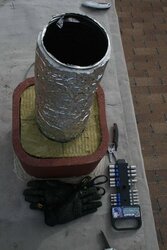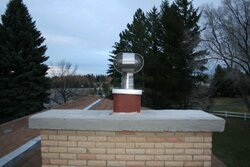OK, so let me just throw this out there.
Everyone pretty much recommends a block off plate for installation of an insert to keep the warm air in the room. Everyone also pretty much recommends insulating the SDS liner so that when it cools off there will be less moisture and cresote formed.
But if you dont put in a block off plate wont the air between the liner and the fireplace be warmer and thus less likely to have the cooling off issue described above???
Everyone pretty much recommends a block off plate for installation of an insert to keep the warm air in the room. Everyone also pretty much recommends insulating the SDS liner so that when it cools off there will be less moisture and cresote formed.
But if you dont put in a block off plate wont the air between the liner and the fireplace be warmer and thus less likely to have the cooling off issue described above???





